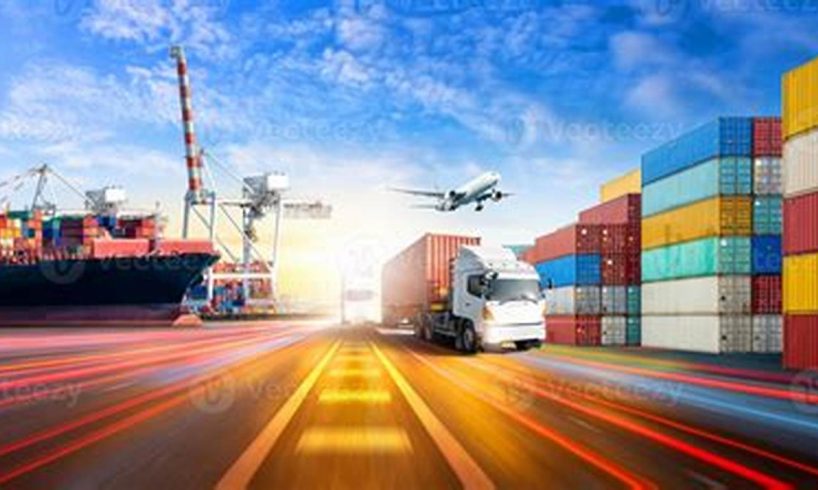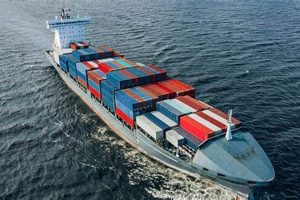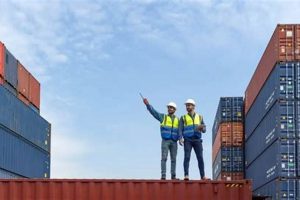
Global logistics and transportation involve the management of the flow of goods, information, and services from origin to destination across international borders. It encompasses a wide range of activities, including freight forwarding, customs brokerage, warehousing, and distribution. The main objective of global logistics and transportation is to ensure that goods are delivered to the right place, at the right time, and at the right cost.
Efficient global logistics and transportation are essential for the smooth functioning of the global economy. They enable businesses to source raw materials from around the world, produce goods in the most cost-effective locations, and distribute finished products to consumers worldwide. In addition, global logistics and transportation play a vital role in disaster relief, humanitarian aid, and other emergency situations.
The field of global logistics and transportation has undergone significant changes in recent years due to advances in technology. The development of new communication and tracking systems has made it possible to track shipments in real-time and to optimize the movement of goods. In addition, the growth of e-commerce has led to a surge in the demand for global logistics and transportation services.
1. Planning and management
Planning and management are essential components of global logistics and transportation. They involve developing and executing strategies for the movement of goods, including transportation, warehousing, and inventory management. Effective planning and management can help businesses to improve their supply chains, reduce costs, and gain a competitive advantage in the global marketplace.
- Transportation planning involves determining the most efficient and cost-effective way to move goods from one location to another. This includes factors such as choosing the right mode of transportation, routing, and scheduling.
- Warehousing planning involves determining the best way to store goods until they are ready to be shipped to their final destination. This includes factors such as choosing the right location, size, and type of warehouse.
- Inventory management involves tracking the flow of goods in and out of a warehouse. This includes factors such as forecasting demand, setting inventory levels, and managing stock.
- Supply chain management involves coordinating all aspects of the supply chain, from sourcing raw materials to delivering finished products to customers. This includes factors such as planning, execution, and monitoring.
By effectively planning and managing their global logistics and transportation operations, businesses can improve their overall performance and achieve their business goals.
2. Freight forwarding
Freight forwarding is a critical component of global logistics and transportation. It involves managing the movement of goods on behalf of shippers, including booking cargo space, preparing shipping documents, and coordinating with customs authorities. Freight forwarders play a vital role in ensuring that goods are shipped safely, efficiently, and in compliance with all applicable laws and regulations.
Freight forwarders offer a wide range of services, including:
- Booking cargo space on ships, airplanes, and trucks
- Preparing shipping documents, such as bills of lading and packing lists
- Coordinating with customs authorities to clear goods through customs
- Arranging for the storage and warehousing of goods
- Providing insurance and other risk management services
Freight forwarders can help shippers to save time and money by providing them with a single point of contact for all of their shipping needs. They can also help shippers to comply with all applicable laws and regulations, and to avoid delays and disruptions in their supply chains.
The use of freight forwarders is essential for businesses that import or export goods. By working with a reputable freight forwarder, businesses can ensure that their goods are shipped safely, efficiently, and in compliance with all applicable laws and regulations.
3. Customs brokerage
Customs brokerage is a critical component of global logistics and transportation. It involves clearing goods through customs, including preparing and submitting documentation, and paying duties and taxes. Customs brokers play a vital role in ensuring that goods are shipped safely, efficiently, and in compliance with all applicable laws and regulations.
- Role of customs brokers
Customs brokers act as intermediaries between importers and exporters and the customs authorities. They prepare and submit documentation, calculate and pay duties and taxes, and ensure that goods are shipped in compliance with all applicable laws and regulations.
- Benefits of using a customs broker
There are many benefits to using a customs broker. Customs brokers can help importers and exporters to:
- Save time and money
- Avoid delays and disruptions
- Comply with all applicable laws and regulations
- Gain access to specialized knowledge and expertise
- Implications for global logistics and transportation
Customs brokerage is a critical part of global logistics and transportation. Without customs brokers, it would be much more difficult to move goods across borders. Customs brokers help to ensure that goods are shipped safely, efficiently, and in compliance with all applicable laws and regulations.
Overall, customs brokerage is a vital component of global logistics and transportation. Customs brokers play a key role in ensuring that goods are shipped safely, efficiently, and in compliance with all applicable laws and regulations.
4. Warehousing
Warehousing is a critical component of global logistics and transportation. It involves storing goods until they are ready to be shipped to their final destination. Warehouses provide a place for goods to be stored safely and securely, and they can also be used to consolidate shipments and prepare them for transport.
The importance of warehousing in global logistics and transportation cannot be overstated. Without warehouses, it would be much more difficult to move goods around the world. Warehouses allow businesses to store goods close to their customers, which can reduce shipping times and costs. Warehouses also allow businesses to consolidate shipments, which can save money on transportation costs. In addition, warehouses can be used to prepare goods for transport, such as by packaging them and labeling them.
There are many different types of warehouses, each with its own advantages and disadvantages. The type of warehouse that is best for a particular business will depend on a number of factors, such as the type of goods being stored, the volume of goods being stored, and the location of the warehouse. Some of the most common types of warehouses include:
- General merchandise warehouses: These warehouses are used to store a wide variety of goods, including food, clothing, and electronics.
- Refrigerated warehouses: These warehouses are used to store perishable goods, such as food and pharmaceuticals.
- Bonded warehouses: These warehouses are used to store goods that are subject to duty or tax. Goods stored in bonded warehouses are not released until the duty or tax has been paid.
- Distribution centers: These warehouses are used to store goods that are ready to be shipped to customers. Distribution centers are typically located close to major transportation hubs.
Warehousing is a vital component of global logistics and transportation. It provides a place for goods to be stored safely and securely, and it can also be used to consolidate shipments and prepare them for transport. Businesses that understand the importance of warehousing can gain a competitive advantage in the global marketplace.
5. Distribution
Distribution is a critical component of global logistics and transportation. It involves delivering goods to their final destination, including last-mile delivery. Last-mile delivery is the final leg of the delivery process, and it can be one of the most challenging and expensive parts of the process. However, it is also essential to ensure that goods are delivered to customers in a timely and efficient manner.
- Planning and execution
Planning and executing distribution operations is a complex task. It involves coordinating with multiple stakeholders, including suppliers, carriers, and customers. It also involves managing inventory levels, optimizing delivery routes, and ensuring that goods are delivered in good condition.
- Technology
Technology is playing an increasingly important role in distribution. GPS tracking and telematics systems can help to improve delivery efficiency and reduce costs. E-commerce platforms and mobile apps can make it easier for customers to track their orders and schedule deliveries.
- Sustainability
Sustainability is becoming increasingly important in distribution. Businesses are looking for ways to reduce their environmental impact, and distribution operations can be a significant source of emissions. Electric vehicles, sustainable packaging, and route optimization can all help to reduce the environmental impact of distribution.
- Customer service
Customer service is an important aspect of distribution. Customers want to receive their goods on time and in good condition. They also want to be able to track their orders and receive updates on the delivery status. Providing excellent customer service can help to build customer loyalty and repeat business.
Distribution is a vital component of global logistics and transportation. By understanding the challenges and opportunities involved in distribution, businesses can improve their operations and gain a competitive advantage in the global marketplace.
6. Technology
Technology is playing an increasingly important role in global logistics and transportation. By using technology, businesses can improve the efficiency and effectiveness of their operations, reduce costs, and gain a competitive advantage in the global marketplace.
- Tracking systems: Tracking systems allow businesses to track the movement of goods in real-time. This information can be used to improve delivery efficiency, reduce inventory levels, and prevent theft.
- Inventory management systems: Inventory management systems help businesses to track inventory levels and manage stock. This information can be used to optimize inventory levels, reduce waste, and improve customer service.
- Electronic data interchange (EDI): EDI is a system for exchanging data electronically between businesses. EDI can be used to streamline communication between businesses, reduce errors, and improve efficiency.
- Other technologies: In addition to the technologies listed above, there are a number of other technologies that can be used to improve the efficiency and effectiveness of global logistics and transportation. These technologies include:
- Radio frequency identification (RFID)
- Blockchain
- Artificial intelligence (AI)
- Machine learning (ML)
Technology is transforming the global logistics and transportation industry. By using technology, businesses can improve their operations, reduce costs, and gain a competitive advantage in the global marketplace.
7. Sustainability
Sustainability is becoming increasingly important in global logistics and transportation. The transportation sector is a major contributor to greenhouse gas emissions, and global logistics and transportation operations can also have a significant environmental impact. By reducing the environmental impact of global logistics and transportation, businesses can help to protect the environment and reduce their operating costs.
There are a number of ways to reduce the environmental impact of global logistics and transportation. Some of the most effective methods include:
- Using fuel-efficient vehicles
- Investing in renewable energy
- Reducing waste
- Optimizing routes
- Using sustainable packaging
By implementing these measures, businesses can reduce their carbon footprint, improve their environmental performance, and gain a competitive advantage in the global marketplace.
Here are some real-life examples of how businesses are reducing the environmental impact of their global logistics and transportation operations:
- UPS is using fuel-efficient vehicles and investing in renewable energy to reduce its carbon footprint.
- DHL is using electric vehicles and bicycles to deliver goods in urban areas.
- Walmart is using sustainable packaging and optimizing its routes to reduce waste and emissions.
These are just a few examples of how businesses are reducing the environmental impact of their global logistics and transportation operations. By understanding the importance of sustainability and implementing effective measures, businesses can help to protect the environment and improve their bottom line.
8. Security
Security is a critical component of global logistics and transportation. With the increasing value and volume of goods being shipped around the world, it is more important than ever to protect goods from theft, damage, and other risks.
- Physical security
Physical security measures include using tamper-proof packaging, locking goods in secure containers, and installing security cameras and alarms. These measures help to deter theft and protect goods from damage. - Electronic security
Electronic security measures include using GPS tracking devices to track the location of goods, and using RFID tags to identify and track individual items. These measures help to prevent theft and allow businesses to quickly locate lost or stolen goods. - Personnel security
Personnel security measures include screening employees and contractors, and providing security training. These measures help to prevent insider theft and ensure that only authorized personnel have access to goods. - Supply chain security
Supply chain security measures include working with suppliers and other partners to ensure that security is maintained throughout the supply chain. These measures help to prevent theft and damage at all stages of the transportation process.
By implementing effective security measures, businesses can protect their goods from theft, damage, and other risks. This helps to reduce losses, improve customer satisfaction, and gain a competitive advantage in the global marketplace.
FAQs about Global Logistics and Transportation
Question 1: What is the difference between logistics and transportation?
Answer: Logistics is the broader term that encompasses all aspects of the movement of goods, including transportation, warehousing, inventory management, and order fulfillment. Transportation is the physical movement of goods from one location to another.
Question 2: What are the key components of a global logistics and transportation system?
Answer: The key components of a global logistics and transportation system include infrastructure, transportation modes, logistics services providers, and information technology.
Question 3: What are the challenges of global logistics and transportation?
Answer: The challenges of global logistics and transportation include managing complex supply chains, dealing with different regulatory environments, and ensuring the security of goods.
Question 4: What are the benefits of using a global logistics and transportation provider?
Answer: The benefits of using a global logistics and transportation provider include improved efficiency, reduced costs, and increased flexibility.
Question 5: What are the trends in global logistics and transportation?
Answer: The trends in global logistics and transportation include the increasing use of technology, the growth of e-commerce, and the need for sustainable solutions.
Question 6: What are the key factors to consider when choosing a global logistics and transportation provider?
Answer: The key factors to consider when choosing a global logistics and transportation provider include experience, reputation, financial stability, and customer service.
By understanding these key aspects of global logistics and transportation, businesses can improve their supply chains, reduce costs, and gain a competitive advantage in the global marketplace.
Transition to the next article section:
Explore the latest trends and innovations in global logistics and transportation.
Tips for Global Logistics and Transportation
Global logistics and transportation are complex and challenging, but by following these tips, businesses can improve their supply chains, reduce costs, and gain a competitive advantage in the global marketplace.
Tip 1: Develop a comprehensive global logistics strategy
A comprehensive global logistics strategy will help you to identify your goals, objectives, and key performance indicators (KPIs). It will also help you to develop a roadmap for achieving your goals.
Tip 2: Partner with a reputable global logistics provider
A reputable global logistics provider can help you to manage your supply chain, reduce costs, and improve efficiency. When choosing a partner, be sure to consider their experience, reputation, financial stability, and customer service.
Tip 3: Use technology to improve efficiency
Technology can be used to improve efficiency in all aspects of global logistics and transportation. For example, you can use tracking systems to track the movement of goods, inventory management systems to manage inventory levels, and electronic data interchange (EDI) to streamline communication with your partners.
Tip 4: Focus on sustainability
Sustainability is becoming increasingly important in global logistics and transportation. By reducing your environmental impact, you can help to protect the environment and reduce your operating costs.
Tip 5: Be prepared for disruptions
Disruptions are inevitable in global logistics and transportation. By being prepared for disruptions, you can minimize their impact on your business.
Summary
By following these tips, businesses can improve their global logistics and transportation operations, reduce costs, and gain a competitive advantage in the global marketplace.
Conclusion
Global logistics and transportation are essential for the smooth functioning of the global economy. They enable businesses to source raw materials from around the world, produce goods in the most cost-effective locations, and distribute finished products to consumers worldwide. Efficient global logistics and transportation are critical for businesses to compete in the global marketplace.
In this article, we have explored the key aspects of global logistics and transportation, including planning and management, freight forwarding, customs brokerage, warehousing, distribution, technology, sustainability, and security. We have also provided tips for businesses on how to improve their global logistics and transportation operations.
As the global economy continues to grow, the importance of global logistics and transportation will only increase. Businesses that understand the importance of global logistics and transportation and that are able to effectively manage their global supply chains will be well-positioned to succeed in the future.






